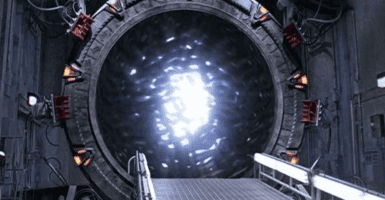Collapsed Arecibo Telescope Gets A Second Act

After more than 50 years of listening to the universe, the Arecibo Telescope collapsed in 2020. The massive observatory project that was a part of the search for habitable planets won’t be able to listen to the universe the way it used to, but scientists in Puerto Rico still hope to give the site and the project a new legacy.
The new program, titled Arecibo C3, has incorporated some of the equipment from the massive observatory site into other projects, and the rest will likely be used for educational purposes.
Programs At The Site

Since the collapse, the site has been empty, awaiting a new purpose without the Arecibo Telescope.
This summer, the newly created Arecibo Observatory Historic District hosted workshops on DNA Sequencing and a middle and high school science exposure program.
Organizers at the observatory are still gaining input from stakeholders in the education and science community as they build science-centered programs for the community at the site.
Hurricanes And Earthquakes

When the Arecibo Telescope was damaged first by Hurricane Maya in 2017 and then by an Earthquake in January 2020, it initially soldiered on. But then one of its cables snapped, requiring a replacement from the US, in August of 2020, followed by a second cable snapping a few months later.
Once the second cable came loose, the observatory was evacuated, and a few months later, in December, the telescope collapsed.
A study from the National Science Foundation (NSF) found that it was not possible to repair the damage, and in August 2023 the facility was shut down. Once the shutdown was complete, the NSF began accepting proposals for what to do with the site minus its giant radio telescope.
What Will Happen To The Equipment?

While the astronomy focus of the Arecibo Observatory has collapsed along with the site’s telescope, the new Arecibo C3 program will continue to develop the site as a center for STEM and education.
What will become of the other instruments that are still functioning at the observatory other than the Arecibo Telescope is still unclear. There’s a 39-foot radio telescope at the site that’s still listening and recording valuable data that scientists hope will continue to function.
In addition, other instrumentation remains, begging the question of what will become of all the equipment that’s still useful from the telescope.
Was The Largest In The World

The Arecibo Telescope was the largest in the world when it was built in 1963, and was still the second largest when it finally collapsed. The observatory was home to some major breakthroughs in planetary science, including discovering proof of Mercury’s 59-day rotation, the first binary pulsar, and the first exoplanet.
The telescope was equipped with a powerful transmitter that sent the first intentional message into space towards the M13 Star Cluster. This was in the hopes that any intelligent life that could hear the message might respond.
Featured In Movies

In addition to the Arecibo Telescope accruing scientific prowess, it’s also a famous place visually. The Arecibo Telescope has appeared in movies like Golden Eye, Contact, and Species.
The legacy of the now-defunct observatory will live on in the imaginations of those who followed the radio telescope’s search for intelligent life in the universe, even if the main telescope has collapsed.












